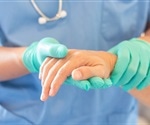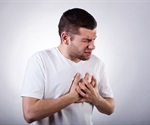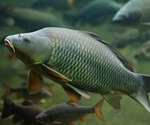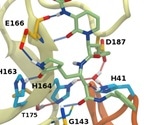
Latest Coronavirus Disease COVID 19 News and Research
Efforts to control COVID-19 could create a health time bomb in slum communities
Efforts to stem the impact of COVID-19 in low to middle income countries could be creating a health time bomb in their slum communities by deepening existing inequalities, according to an international team of health researchers led by the University of Warwick.
New poll highlights feelings of loneliness and isolation among older adults during COVID-19
Staying close to home and avoiding crowded places can help older adults reduce their risk of COVID-19. But a new national poll suggests it comes with a cost, especially for those with health challenges.
With no legal guardrails for patients, ambulances drive surprise medical billing
School librarian Amanda Brasfield bent over to grab her lunch from a small refrigerator and felt her heart begin to race. Even after lying on her office floor and closing her eyes, her heart kept pounding and fluttering in her chest.
Facing COVID-19 patients on ventilators down may cause nerve damage
Some people are more likely to experience severe coronavirus disease (COVID-19), caused by the severe acute respiratory syndrome coronavirus 2 (SARS-CoV-2). These include the elderly, people who are obese and have underlying medical conditions, such as diabetes, obesity, heart disease, lung illness, and kidney disease, among others.
Single-molecule imaging of SARS-CoV-2 spikes on virus particles
Using single-molecule FRET analysis, a team of researchers has revealed how the different conformations of the severe acute respiratory syndrome coronavirus 2 (SARS-CoV-2) spike protein are interconnected. Figuring out the different conformations in real-time and which conformations antibodies prefer may help design effective vaccines and drugs. The research is published on the preprint server bioRxiv*.
Balancing COVID-19 risk with educational benefits in school reopening decisions
Now a new study by researchers at the Institute for Disease Modeling and published on the preprint server medRxiv* in September 2020 focuses on modeling the potential risk of COVID-19 for school students and staff if schools are re-opened in a range of scenarios. This could guide further research on the health and educational outcomes of school reopenings.
Susceptibility of domestic pigs to SARS-CoV-2
A recent study published on the preprint server bioRxiv sought to determine the susceptibility of domestic swine to SARS-CoV-2. Domestic swine is one of the most highly produced agricultural species that has the potential to impact public health significantly.
Potential sea animal reservoirs for coronaviruses?
The COVID-19 pandemic has focused, yet again, intense research interest on coronaviruses, due to the high toll the novel coronavirus SARS-CoV-2 has taken on human life, health, economic well-being, and social activity. A recent paper published on the server Preprints in September 2020 reviews what is known about this viral infection in water life.
Climatic changes may potentially impact COVID-19 pandemic
A recent epidemiological study by Princeton University researchers suggests that the severity of coronavirus disease 2019 (COVID-19) outbreak during the winter season depends on the susceptibility of the population to severe acute respiratory syndrome coronavirus 2 (SARS-CoV-2)-induced infection as well as the effectiveness of non-pharmaceutical control measures applied to control the virus spread.
New insights into structural stability of SARS-CoV-2 main protease
In a recent bioRxiv preprint paper, researchers from the US and Italy utilized molecular dynamics simulations and revealed that the conformational stability of the SARS-CoV-2 binding site, bound inhibitors, and the hydrogen bond networks of the viral main protease (Mpro) are highly sensitive to protonation assignments.
A map of SARS-CoV-2 escape mutations enables the development of therapeutic antibody cocktails
A recent tour-de-force study by the US researchers describes a comprehensive approach to completely map mutations to the SARS-CoV-2 receptor-binding domain (RBD) that escape antibody binding – enabling, in turn, rational design of antibody therapeutics and appraisal of the antigenic consequences of viral evolution. The results are currently available in a bioRxiv preprint paper.
Shedding light on altered blood cell traits involved in severe COVID-19
Researchers at the University of Georgia in the United States have shed light on the pathological mechanisms underlying the association between the genetic locus 3p21.31 and severe coronavirus disease 2019 (COVID-19).
India's whole-virion inactivated SARS-CoV-2 vaccine shows promise
Researchers in India have conducted a preclinical study demonstrating the safety and efficacy of a new candidate vaccine for severe acute respiratory syndrome coronavirus 2 (SARS-CoV-2), the agent that causes coronavirus disease 2019 (COVID-19).
Researchers develop highly scalable, accurate antibody test for COVID-19
An antibody test for the virus that causes COVID-19, developed by researchers at The University of Texas at Austin in collaboration with Houston Methodist and other institutions, is more accurate and can handle a much larger number of donor samples at lower overall cost than standard antibody tests currently in use.
Making gyms safer: Why the virus is less likely to spread there than in a bar
After shutting down in the spring, America’s empty gyms are beckoning a cautious public back for a workout. To reassure wary customers, owners have put in place — and now advertise — a variety of coronavirus control measures.
Kids are missing critical windows for lead testing due to pandemic
Families skipping or delaying pediatric appointments for their young children because of the pandemic are missing out on more than vaccines. Critical testing for lead poisoning has plummeted in many parts of the country.
Danish household SARS-CoV-2 study shows low transmission from children
Using data from the national register in Denmark, researchers studied how likely persons infected with the severe acute respiratory syndrome coronavirus 2 (SARS-CoV-2) transmit it within their households. The study found additional household members tested positive in 17% of cases after one person in the household was infected. The research is published on the preprint server medRxiv in September 2020.
Seroconversion marks recovery from COVID-19
Nine months into the COVID-19 pandemic, scientists are still seeking to understand the protective immunity that develops against the causative agent severe acute respiratory syndrome coronavirus 2 (SARS-CoV-2). Despite the increasing need for serological tests in epidemiology, their clinical value has not been fully established. A new paper published in the Journal of Medical Virology in September 2020 describes the relationship of COVID-19 disease symptoms with the serological status over time.
New review explores the role of antibodies and T-cells towards an effective COVID vaccine
More than 100 companies have rushed into vaccine development against COVID-19 as the U.S. government pushes for a vaccine rollout at "warp speed" -- possibly by the end of the year -- but the bar set for an effective, long-lasting vaccine is far too low and may prove dangerous, according to Marc Hellerstein of the University of California, Berkeley.
Study shows how the pandemic unfolded across the world
A new study combines evolutionary genomics from coronavirus samples with computer-simulated epidemics and detailed travel records to reconstruct the spread of coronavirus across the world in unprecedented detail.




_987e327fa8274297bf6da4dd3c95ee69-150x125.jpg)







_fde20c4c02c84a4f993a912b700d1e78-150x125.jpg)




_65342bea19c1462ab560234f52b60b18-150x125.jpg)
























.png)









No hay comentarios:
Publicar un comentario